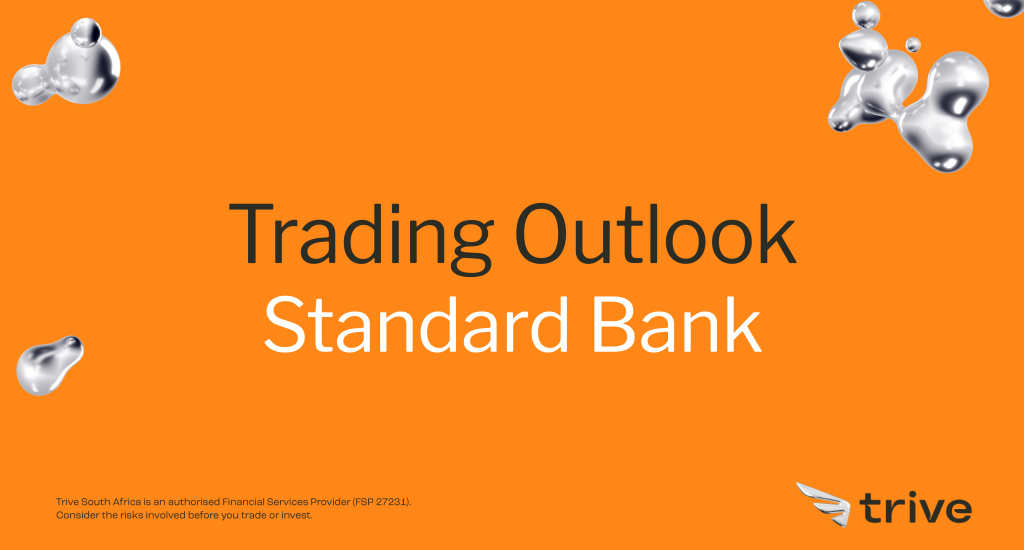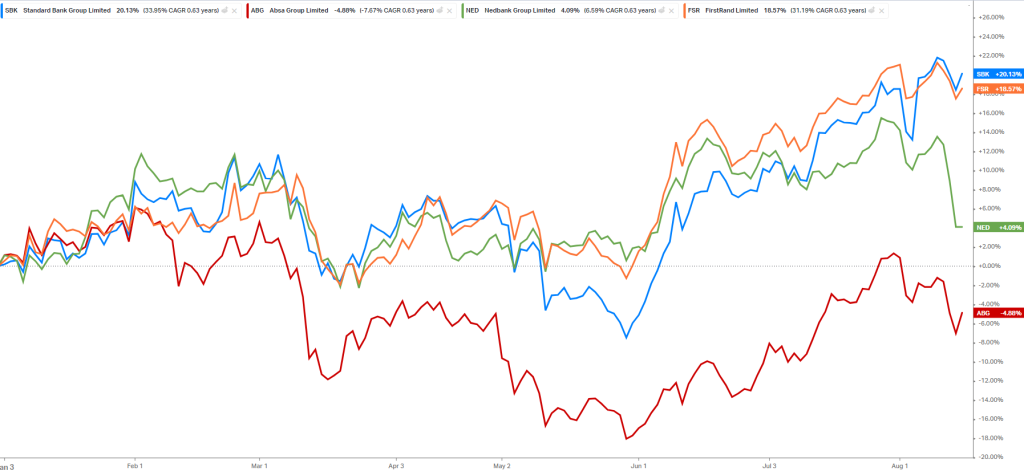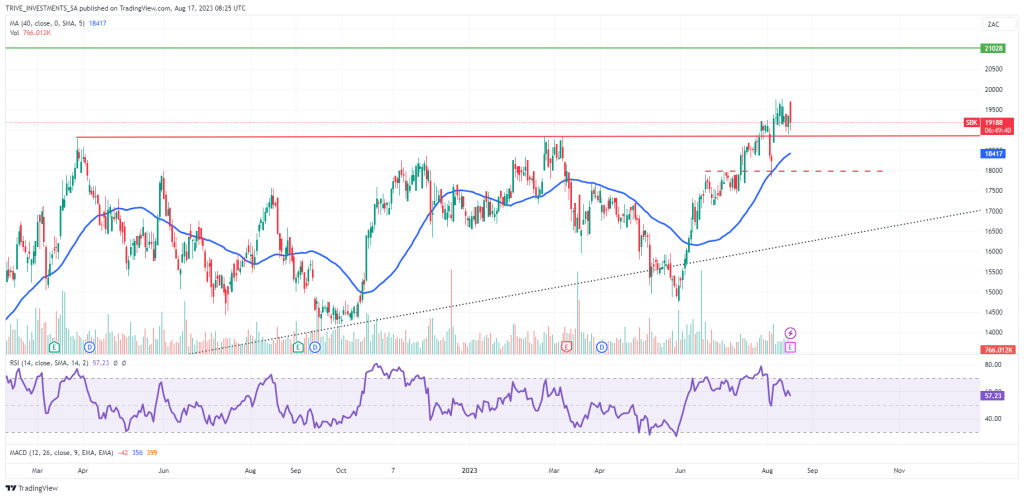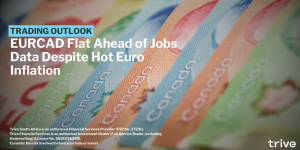
With continued rolling power outages weighing in on banking’s bottom line, higher inflation and costs trampling on consumer spending could set SA Banking up for a volatile ride ahead.
SA Banking Performance
Looking at the YTD performance chart of the “Big Four” South African Banks from 16 August, we can see Standard Bank Group Limited (blue line) leading the pack up 20%, followed closely by FirstRand Limited (orange) with 18%. Nedbank Group Limited (green) and ABSA Group Limited have been under pressure, with gains limited to -4.8% and 4%, respectively.

Standard Bank Group Limited (JSE: SBK)
Looking at Standard Bank Group, which released its results for the six months that ended 30 June 2023 showed some resilience despite mounting macroeconomic pressures. Standard Bank grew income by 29% for the reporting period, while headline earnings per share increased by 36%. SBK has also declared an interim dividend of 690 cents per ordinary share.
Looking forward to the year’s second half, SBK expects downside risk to global growth to remain, while a higher interest rate environment could constrict demand and balance sheet growth prospects. Overall, Standard Bank’s forward guidance for growth in the year’s second half remains muted, but it does expect FY23 revenue growth to be higher than the previous guidance.
Technical
Looking at the daily chart of Standard Bank Group Limited (JSE: SBK), we can see the price has broken out of a major resistance zone and now supports (solid red line) at the R191.49 a share level. The market is still digesting the earnings release, seeing the price move lower and retesting the support level. If the major support level does not hold, then the possibility does exist that the next level of support around R180.00 (red dotted line) could become a focal point.
However, if the banking share continues to show resilience and the major support level holds, then the significant level of resistance at R210.00 a share (green line) might be the level to watch.

Summary
The South African banking sector has been resilient over the decades, and if the banking sector continues to remain well-capitalized, these shares could continue to show value for investors.
Levels to watch out for will be the major support level around R191.89 and lower at R180.00, while the significant level of resistance remains 8% higher around R210.28.
Sources: JSE SENS, Koyfin, TradingView
Analysis by Barry Dumas, Head of Client Education
Disclaimer: Trive South Africa (Pty) Ltd, Registration number 2005/011130/07, and an Authorised Financial Services Provider in terms of the Financial Advisory and Intermediary Services Act 2002 (FSP No. 27231). Any analysis/data/opinion contained herein are for informational purposes only and should not be considered advice or a recommendation to invest in any security. The content herein was created using proprietary strategies based on parameters that may include price, time, economic events, liquidity, risk, and macro and cyclical analysis. Securities involve a degree of risk and are volatile instruments. Market and economic conditions are subject to sudden change, which may have a material impact on the outcome of financial instruments and may not be suitable for all investors. When trading or investing in securities or alternative products, the value of the product can increase or decrease meaning your investment can increase or decrease in value. Past performance is not an indication of future performance. Trive South Africa (Pty) Ltd, and its employees assume no liability for any loss or damage (direct, indirect, consequential, or inconsequential) that may be suffered from using or relying on the information contained herein. Please consider the risks involved before you trade or invest.




